You can view our video content and a category-by-category report here.
No pain, no gain. Or so the saying goes. But there’s been no end of pain for Britain’s biggest grocers and their suppliers this past year, and not so many gains. The big four are losing share as they cut prices to compete with the discounters and deflation tightens its grip on the economy.
A year ago, the big four’s combined share of the market was 71.3%. Now it’s 70.3% [Nielsen Total Till 52 w/e 7 November 2015] as Aldi and Lidl continue to run rings round their rivals. Aldi’s sales have surged by more than a fifth over the past year, Lidl’s by almost 15%. They now account for 10.2% of the market, and counting. Their success is thanks in part to lean, duplication-free ranges of mostly own-label goods promising the quality of brands at a fraction of the price.
That’s bad news for brands. And as the big four look to compete against the discounters, fat is being trimmed from ranges in rationalisation programmes such as Tesco’s Project Reset and Asda’s Project Renewal. As a result, there have been big losses in this year’s Top Products Survey: Asda axed Hovis’s biggest loaves, which make up 70% of the brand’s total sales; Tesco culled Carlsberg, costing the brand an estimated £60m a year. And so forth.
But, as we reveal over the next 153 pages (our biggest ever Top Products Survey, beefed up to 112 categories and accounting for £110bn worth of products), some fmcg suppliers have managed to grow in spite of these challenging conditions. Who are these lean, mean selling machines? How are they in such good shape? And who’s looking flabby?
Value growth is no mean feat in a deflationary market. Yet the year’s star performers have done just that, though a combination of savvy innovation, big marketing investment and new lines of distribution. Smirnoff has achieved the greatest branded growth of the year, worth £34.3m; brands including Corona, Alpro, Felix, Nakd and M&M’s, and fresh produce such as strawberries and avocados have also turned in strong growth.
Of course, the drivers of this growth are as diverse as the products, but for many volume growth has been driven by sharp falls in price. “This is a price war, a branded price war, and the consumer has been the beneficiary,” says Mike Watkins, head of business & shopper insight at Nielsen. “We’re now 18 months into a price war and we’re really seeing the impact of that on products.”
Nowhere more so than in fresh foods, adds Watkins. “About half of Aldi and Lidl’s incremental sales this year have come from fresh foods such as produce, fresh meat and poultry, bakery and chilled food. Fresh food is the new battleground against the big supermarkets. It’s been a massive footfall driver for the discounters.”

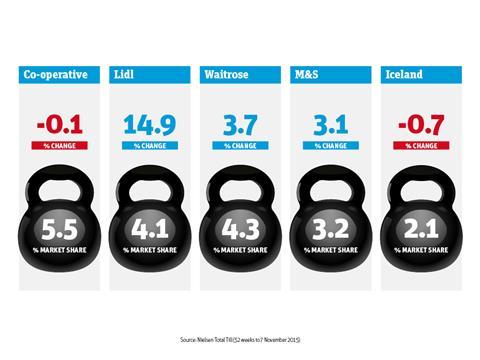
Fresh produce
That’s why six of the 10 greatest category value declines in our survey have been on fresh food: the supermarkets have slashed prices to lure shoppers back through their doors. Fresh veg, meat, milk, poultry, butters & spreads and cheese have lost nearly a billion pounds in sales between them. Veg has suffered the greatest loss of the year, haemorrhaging £317.6m.
The good news is that some of the biggest price falls of the year (broccoli’s average price is down 19.8%; carrots 14.5%; potatoes 10.9%) have helped maintain veg volumes, which have grown 1.5%. The same can’t be said for meat and poultry. Between them they’ve lost a further £337.4m. Volumes are down for both sectors.
“The discounting and deflation evident across the grocery market has certainly had an impact,” says Guy Wooton, director of category & insight at poultry processor Moy Park. “Retailers have reviewed their promotional strategies and moved away from multibuy deals towards every day low price. This has also impacted volumes, although it does mean shoppers are buying more frequently.”
Promotions are indeed declining. Thirty two per cent of sales have been on deal in the past year, down from 34% a year ago and 35% in 2012. Simplification and transparency of prices are the grocers’ aim, with the mechanic of choice moving from multibuys to simple price cuts. For example, in meat, Tesco has cut the weight of sirloin, rump and ribeye steaks in order to bring them to the £3 price point.

Promotional tactics of course vary from sector to sector, and in some deals are on the up. Cheese brands are squaring up to each other and own label on the gondola ends and slashing prices, contributing to a £68.9m decline in sales for the sector. Ranges are being rationalised too, with brands reporting a slimming of Sainsbury’s range over the past year, and Asda building its Cheddar fixture around Anchor and Cathedral City, limiting shelf space for others.
Butter brands have also been bruised by distribution losses, contributing £15m to the category’s £74.8m decline, as the market has polarised between own-label block butter and market leader Lurpak, which defied the 4.4% volume decline with a 5.6% surge in volume sales, driven by a rise in deals.
Even Britain’s biggest grocery brand isn’t immune to the squeeze on prices. Volume sales of Coca-Cola have remained more or less flat in the past year, but £26.6m has been wiped off the brand’s value. “Just look at the promotional dynamic going on in total fmcg,” says CCE general manager Leendert den Hollander in explanation. “In many categories there are more promotions and promotions seem to be getting deeper.”
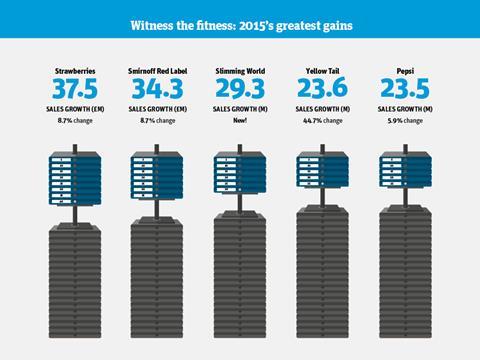
Of course, price isn’t the only factor affecting shopper choices and retailer ranging decisions. With sugar content under growing scrutiny, retailers have been devoting less space to sugary drinks and prioritising those with ‘healthier’ credentials. In September, Tesco axed a host of added-sugar soft drinks previously marketed at the kids lunchbox market, including those under the Capri-Sun, Ribena and Rubicon brands, for example.
The smart players saw the furore over sugar coming. PepsiCo has been prioritising Pepsi Max, targeting teens with digital marketing campaigns and low prices, for years. Sales are up £23.5m, adding to the £33.7m growth we reported a year ago. CCE, meanwhile, wants half of Coke volumes to be low or no-sugar by 2020. It’s getting tantalisingly close: den Hollander says Diet Coke, Coke Zero and Coke Life now account for 51.7% of volumes.
Although the £24.3m growth of Coke Life hasn’t been enough to offset the losses of all other major Coke variants, the March launch of the Capri-Sun no-added-sugar range softened the blow from the wider juice drinks market’s decline. Oasis is also in strong growth, with the Mighty Drops pocket squash launched in 2014 now worth a cool £3.3m.
Innovation is clearly still crucial. In fact, suggests United Biscuits MD Jon Eggleton, it’s never been more important. “You can’t just rely on promotions to grow your business because that ultimately just fuels the deflation,” he says. “That’s what keeps me awake. When you’re in fmcg, deflation is tough because you rely on the top line to grow your business. You need to look for incremental innovation opportunities.”
Eggleton points to UB’s new Jacob’s Cracker Crisps launch as a case in point. The product has racked up £5.5m since its launch in May, continuing Jacob’s extension into impulse snacking that began with products such as Oddities and Mini Cheddars. In light of Tesco’s latest biscuit range review, which saw 12% of biscuit SKUs pulled from the retailer’s shelves in November and average space cut from two aisles to one, such activity is vital.
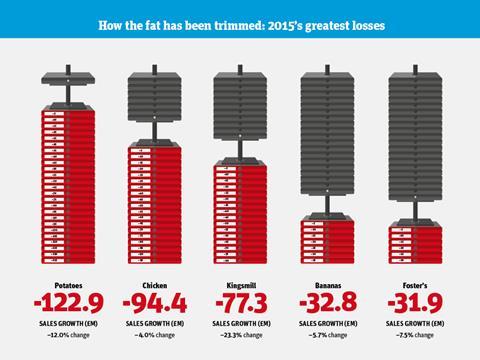
And range rationalisation is not necessarily a negative for suppliers. “It’s having a positive impact on the cake category,” says Phil Ellis, marketing director for sweet treats at Premier Foods, whose Mr Kipling and Cadbury cakes have grown a combined £15.8m. “By working in close partnership with retailers, we’ve been able to advise and make recommendations on the right product mix for different store formats. Top sellers now have more space to make a bigger impact on shelf.”
Crucially it’s not just a case of shelf space being sold to the highest bidder, says Silvia Rindone, VP for consumer product & retail at Capgemini Consulting: “I’m sure those conversations still exist but retailers are getting more and more careful about how they ask suppliers to pitch because of the scandals we’ve had in recent years.”
That data - starting with sales performance gathered from till rolls and extending to demographic trends, local factors, the weather, real-time analysis of competitors and even consumer sentiment expressed on social media - helps retailers manage their ranges much more effectively than they have in the past, argue many.
But no amount of number crunching will save some brands from the inevitable. Those with little to differentiate themselves from their rivals but price have found themselves in difficult positions. Carlsberg, Clipper Tea and Kingsmill are among the brands that apparently hadn’t done enough to justify their places on Tesco’s shelves this year, with all falling victim in the retailer’s Project Reset to varying degrees.
Nine of Kingsmill’s core loaves have returned to Tesco in recent months after their removal in March, however. Their reinstatement is testament to the brand’s “market-leading innovation and one of the most varied UK bakery product portfolios” says owner Allied Bakeries, but some suggest rock bottom prices remain the brand’s USP. Key loaves now sell for just 75p in Tesco, the lowest price since February 2011, allowing the retailer to match the price of the same loaves in Asda.
This is a crucial point. Carlsberg was given its marching orders from Tesco after several SKUs stocked by the retailer entered Lidl late last year. Inevitably, Tesco cut prices to compete, prompting the brand’s rivals to lower theirs (Carling, Foster’s and Stella have all seen significant falls in price too), accelerating deflation in the already commoditised lager market and undermining the commercial argument for Tesco to continue to stock Carlsberg.
So long as the space vacated by Carlsberg was still being allocated to standard lager, the removal of Britain’s fifth-largest lager brand from Tesco would help the retailer negotiate better terms with Carlsberg’s rivals, as the likes of Foster’s and Carling could expect to mop up the sales that would have previously gone to Carlsberg. However, many suggest the Carlsberg delisting has allowed the retailer to devote more space to higher margin craft beers.
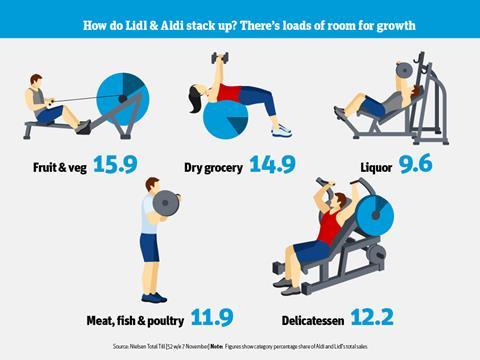
Craft
The extra space being devoted to craft products is reflected in the numbers. The burgeoning craft spirits sector has grown 48% in the past year and is expected to follow the explosive growth seen in craft ale, best illustrated by the growth of BrewDog Punk IPA, which has doubled its supermarket sales to £6.2m while maintaining a price almost twice the ale and stout market average (though an 8.1% fall in average price reflects greater use of volume-driving deals).
Everyone’s after a piece of the action. Diageo reports strong growth in its Bulleit Bourbon, Ciroc vodka and Johnny Walker malt whiskies, for example. Indeed, Diageo has pulled off perhaps the greatest turnaround of the year with new launches into the premium bottled ale fixture under the Guinness brand. Guinness Dublin Porter, West Indies Porter and Golden Ale have racked up £6.6m so far. Hopes are just as high for the latest launch under the brand: Hop House 13 Lager.
“All of a sudden Guinness is a portfolio of many variants - it’s back in growth and we’ve been striving for that for a long time,” says Diageo GB managing director Andrew Cowan. “What I love about premium bottled ale is how retailers have linked a relatively modest promotional discount with the psyche of the shopper of that category, which is one of curiosity, exploration and trying something new. Three-for-a-price promotions allow shoppers to buy three different variants and try them out.”
There are more examples of higher-value NPD offsetting the impact of deflation and deepening deals for brands. Average prices have soared a staggering 15% in fabric conditioners over the past year - the greatest increase in this year’s survey - thanks to new concentrated, fragranced products such as Lenor Unstoppables and Comfort Creations. Roast & ground coffee is another success story, with value growth of 13.6% on volumes up 8.3% driven primarily by new pod formats.
Which goes to show, after all the pain of range rationalisation and price wars, there are still gains within the grocers’ grasp.




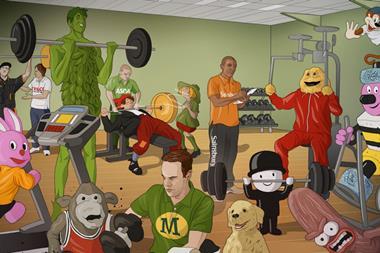



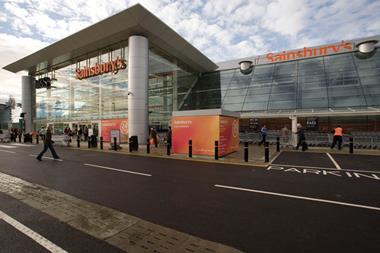
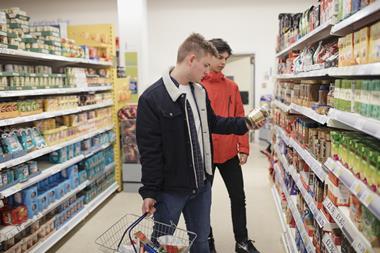
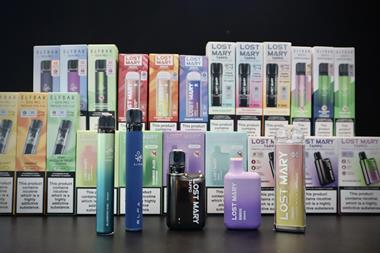


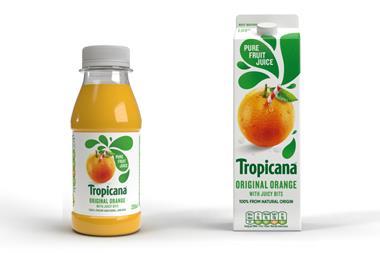

No comments yet